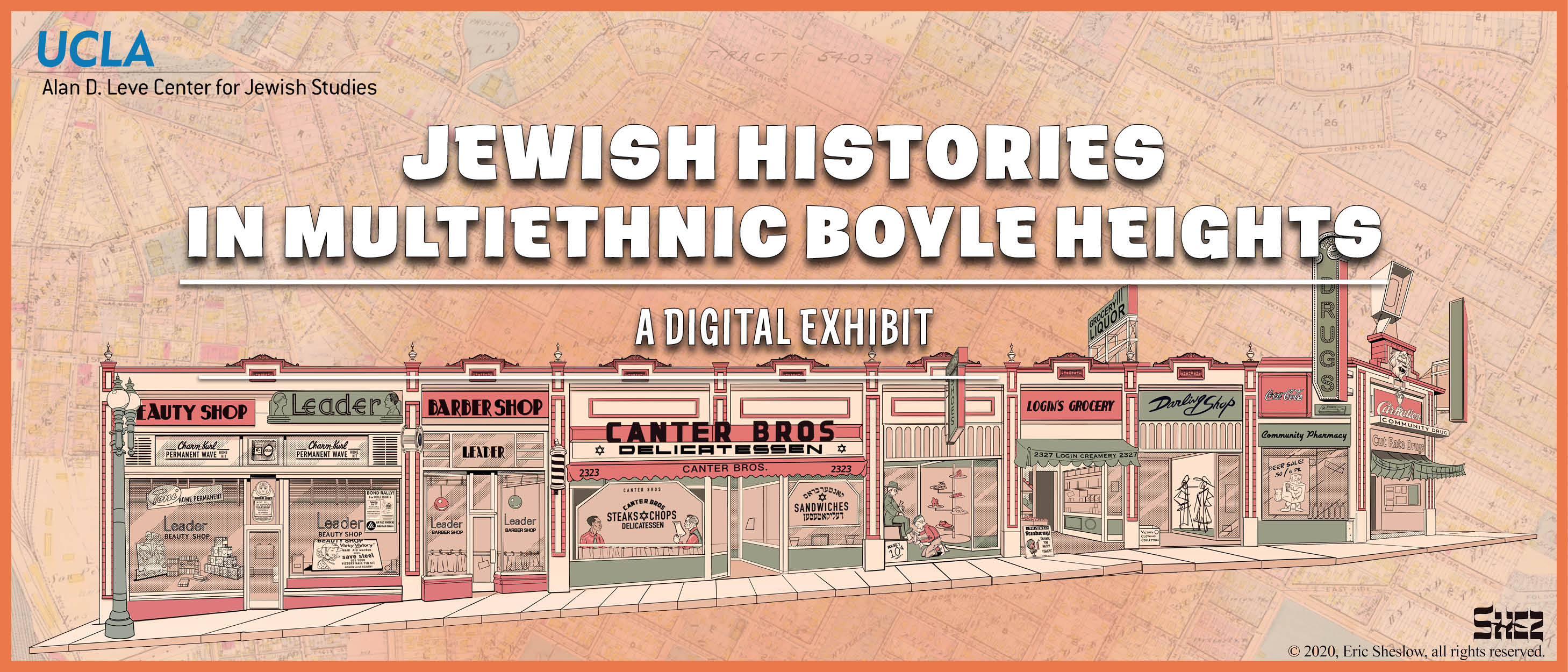Introduction

In the 1930s, Boyle Heights—with its main throughway, Brooklyn Avenue—was home to some 10,000 Jewish households, about a third of the Los Angeles Jewish population and the highest concentration of Jews west of the Mississippi. Jewish community life flourished with dozens of synagogues, charitable institutions, cultural organizations, schools, and community centers, not to mention Jewish-owned bakeries, kosher butcheries, delis, restaurants, and movie theaters. This vibrant Jewish community emerged in a multiethnic context, in one of the most diverse neighborhoods in Los Angeles called home by thousands of Mexican, Japanese, Armenian/Turkish, Italian, Russian, and African American families. Using archival materials shared by a variety of museums, libraries, and community partners, this digital exhibition aims to locate Boyle Heights’ Jewish histories within this multiethnic context, revealing both the diversity of Jewish experiences in Boyle Heights and the ways those experiences coincided with, and diverged from, those of the other diasporic communities that settled there.
In the years after World War II, as construction began on a series of freeways and public housing projects in and around the neighborhood, Jewish residents began leaving Boyle Heights en masse. By the 1960s, the neighborhood was home to a Mexican American majority, whose experiences with social and economic marginalization, police violence, and urban renewal were different than those of residents before them. And yet, many patterns of resistance, cultural expression and community organizing endured, taking new and dynamic forms. To celebrate this efflorescence of Chicano/a cultural and political activity, Brooklyn Avenue was renamed Avenida César Chávez (César E. Chávez Avenue) in 1994 and a portion of the street designated as the Brooklyn Avenue Historic Neighborhood Corridor. By bringing the many, overlapping layers of the neighborhood's past into focus, "Jewish Histories in Multiethnic Boyle Heights" invites users to think critically about how an array of stakeholders—both within the neighborhood and without—have generated and enacted ideas about its religious, social, and cultural identity and how the Jewish community’s relationship to the neighborhood has changed over time.